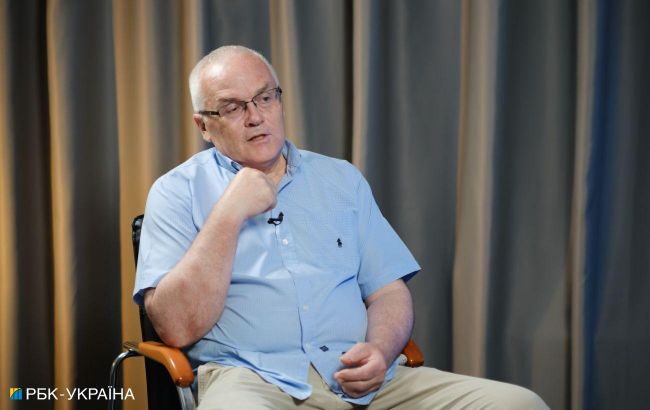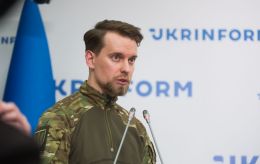Attack on Zaporizhzhia NPP carries lesser threat than Chornobyl
 Doctor of Technical Sciences, nuclear physicist Volodymyr Borysenko (Vitaliy Nosach, RBC-Ukraine)
Doctor of Technical Sciences, nuclear physicist Volodymyr Borysenko (Vitaliy Nosach, RBC-Ukraine)
Possible terrorist attacks by Russians on the Zaporizhzhia Nuclear Power Plant (NPP) cannot be compared to the Chornobyl disaster. The occupiers would have to make a significant effort to cause a radiation leak, said Dr. Volodymyr Borysenko, a nuclear physicist and doctor of technical sciences, in an interview with RBC-Ukraine.
According to the scientist, the plant poses much less danger today than it did even six months or a year ago when it was seized on March 4, 2022, with some units still operational.
Borysenko said that five out of six power units are currently in a cold shutdown state. The last operating unit was shut down on September 11, 2022. Since then, over nine months have passed for the sixth unit, and for the rest, it has been almost a year, with the level of radioactivity in the fuel decreasing by thousands of times during this period. If an accident had occurred in March or April 2022, the consequences would have been a thousand times worse, even in the worst-case scenario.
Regarding possible terrorist scenarios, Borysenko believes that the occupiers would have to take significant measures to release radiation from the fuel. They would need to cut off the electricity supplied from the Ukrainian side, destroy the pipelines that deliver coolant water to the fuel, and so on. However, the period for these emergency events to unfold would last longer than a few hours as it would have been if the reactor were operating at full power, allowing only 2-3 hours before fuel damage occurs. Today, we have a time buffer of several days, even in the worst-case scenarios.
According to the scientist, during this time, diplomatic actions can be taken, and it will become evident that the occupying authorities at the plant are attempting a nuclear act of terrorism that could have highly undesirable consequences. Any other possibilities, such as undermining the spent fuel storage or the radioactive waste repository, would have localized effects, covering several kilometers at most. Such consequences cannot be compared to those of the Chornobyl NPP, but a thousand times less.
Zaporizhzhia Nuclear Power Plant
Russian forces seized the largest nuclear power plant in Europe, the Zaporizhzhia NPP, in March 2022, and it is currently mined. Kyrylo Budanov, the head of the Main Intelligence Directorate, said that the threat of an artificial technogenic catastrophe at the plant is decreasing.
Earlier, Olena Pareniuk, a staff member of the Institute for Safety Problems of Nuclear Power Plants at the National Academy of Sciences of Ukraine, said in an interview with RBC-Ukraine that a possible terrorist attack by Russians on the Zaporizhzhia NPP could lead to radioactive contamination of the water in the Dnipro River and the soil in adjacent territories.

